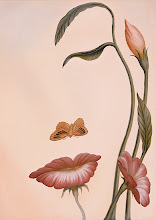Gram stain of mixed Stap aureus (Gram positive cocci) and E. coli (Gram negative bacilli)
The Gram staining method, named after the Danish bacteriologist who originally devised it in 1882 (published 1884), Hans Christian Gram, is one of the most important staining techniques in microbiology. It is almost always the first test performed for the identification of bacteria. The primary stain of the Gram's method is crystal violet. Crystal violet is sometimes substituted with methylene blue, which is equally effective. The microorganisms that retain the crystal violet-iodine complex appear purple brown under microscopic examination. These microorganisms that are stained by the Gram's method are commonly classified as Gram-positive or Gram non-negative. Others that are not stained by crystal violet are referred to as Gram negative, and appear red.
Gram staining is based on the ability of bacteria cell wall to retaining the crystal violet dye during solvent treatment. The cell walls for Gram-positive microorganisms have a higher peptidoglycan and lower lipid content than gram-negative bacteria. Bacteria cell walls are stained by the crystal violet. Iodine is subsequently added as a mordant to form the crystal violet-iodine complex so that the dye cannot be removed easily. This step is commonly referred to as fixing the dye. However, subsequent treatment with a decolorizer, which is a mixed solvent of ethanol and acetone, dissolves the lipid layer from the gram-negative cells. The removal of the lipid layer enhances the leaching of the primary stain from the cells into the surrounding solvent. In contrast, the solvent dehydrates the thicker Gram-positive cell walls, closing the pores as the cell wall shrinks during dehydration. As a result, the diffusion of the violet-iodine complex is blocked, and the bacteria remain stained. The length of the decolorization is critical in differentiating the gram-positive bacteria from the gram-negative bacteria. A prolonged exposure to the decolorizing agent will remove all the stain from both types of bacteria. Some Gram-positive bacteria may lose the stain easily and therefore appear as a mixture of Gram-positive and Gram-negative bacteria (Gram-variable).
Finally, a counterstain of basic fuchsin is applied to the smear to give decolorized gram-negative bacteria a pink color. Some laboratories use safranin as a counterstain instead. Basic fuchsin stains many Gram-negative bacteria more intensely than does safranin, making them easier to see. Some bacteria which are poorly stained by safranin, such as Haemophilus spp., Legionella spp., and some anaerobic bacteria, are readily stained by basic fuchsin, but not safranin. The polychromatic nature of the gram stain enables determination of the size and shape of both Gram-negative and Gram-positive bacteria. If desired, the slides can be permanently mounted and preserved for record keeping.
Besides Gram's stain, there are a wide range of other staining methods available. By using appropriate dyes, different parts of the bacteria structures such as capsules, flagella, granules, and spores can be stained. Staining techniques are widely used to visualize those components that are otherwise too difficult to see under a light microscope. In addition, special stains can be used to visualize other microorganisms not readily visualized by the Gram stain, such as mycobacteria, rickettsia, spirochetes, and others. In addition, there are modifications of the Gram stain that allow morphologic analysis of eukaryotic cells in clinical specimens.













